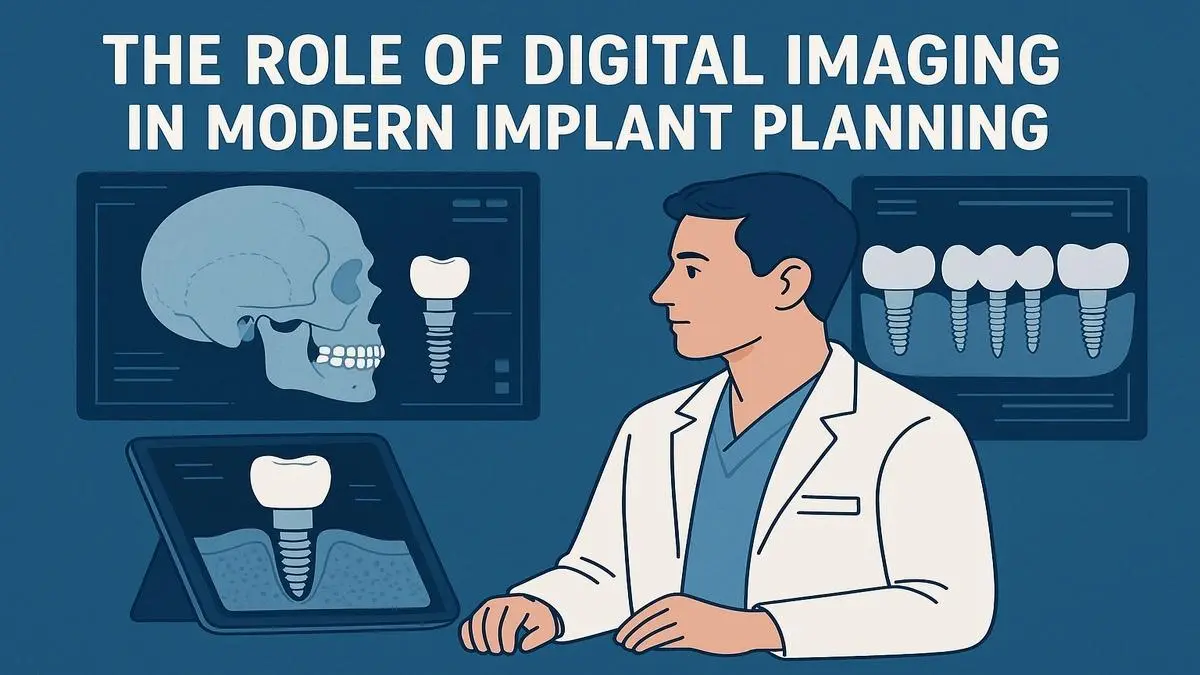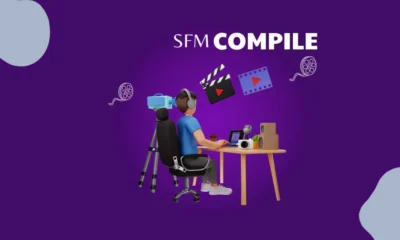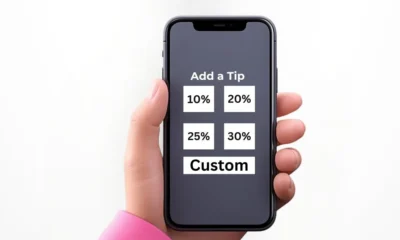HEALTH AND FITNESS
The Role of Digital Imaging in Modern Implant Planning

Key Takeaways
- Digital imaging transforms dental implant planning by bringing exceptional precision and enabling personalized treatment options for every patient.
- Advanced technologies, such as CBCT, 3D intraoral scanning, and facial scanners, allow for proactively identifying anatomical challenges and improving long-term outcomes.
- Digital workflows improve safety and predictability, shorten treatment times, and reduce the likelihood of complications.
- Emerging trends in artificial intelligence and cloud-based solutions continue to raise the bar for what’s possible in implant dentistry.
How Digital Imaging Shapes Dental Implants Today
Digital imaging has become the bedrock of dental implant planning, revolutionizing traditional methods and setting new standards for clinical excellence. Unlike past eras, where dental teams relied mainly on conventional X-rays and two-dimensional representations, today’s technology provides unparalleled accuracy and reliability. What sets modern imaging apart is its ability to reveal a complete, three-dimensional picture of the jaws, supporting tissues, and the spaces where implants must fit. As a result, dental professionals are empowered to tailor each plan to the patient’s specific needs, ensuring that implants restore function and blend seamlessly with surrounding teeth.
Clinics and dental specialists who utilize modern systems, including advanced digital imaging as seen at Ora 4X Dental Implant Studio, can design precisely customized care. Whether a patient is missing a single tooth or requires a full-arch restoration, clinicians can virtually simulate outcomes, anticipate challenges, and choose the best approach before making a single incision. This level of planning helps reduce risk, minimize invasive procedures, and deliver natural-looking, durable smiles. The positive impact extends to patient comfort and satisfaction, as digital imaging helps demystify treatment options and reinforce trust between patients and their dental care teams.
Understanding the Most Common Digital Imaging Technologies
The evolution of dental imaging technology has introduced several tools, each offering unique advantages at different stages of the implant process. Panoramic X-rays continue to play an essential role as a foundation for assessment. They give clinicians a bird ‘s-eye view of the jaw structure, highlighting tooth positions and bone contours and identifying anomalies or pathologies early on. While invaluable for preliminary diagnostics, panoramic images are just the first step in a layered, comprehensive digital approach.
The advent of Cone Beam Computed Tomography (CBCT) marked a significant milestone in dental imaging. CBCT delivers high-resolution, 3D scans of bone, nerves, blood vessels, and soft tissue. By rotating around the patient, these scanners provide volumetric images from every angle, capturing critical information that isn’t visible with 2D methods. CBCT makes it possible to evaluate bone thickness and density—key factors for deciding implant location and angulation—and to avoid anatomical hazards, ensuring safer procedures.
Intraoral scanners have recently replaced traditional, often uncomfortable, impression trays. These handheld devices quickly generate accurate digital impressions of gums, remaining teeth, and the entire bite. The scanners are more comfortable for patients and increase efficiency, enabling faster turnaround times for restorations and surgical guides. For cases with heightened cosmetic requirements, facial scanners can harmonize dental work with overall facial structures, letting patients preview their expected new smiles before the first step of treatment.
How Digital Imaging Improves Accuracy and Safety
The sophistication of digital imaging directly translates into safer and more predictable implant surgery. Detailed, 3D visualization of bone and soft tissue allows dental professionals to map out every detail of the procedure, identifying vital structures like nerves and sinuses to avoid placing implants. By using CBCT data, dentists can run digital simulations, choosing the optimal location, angle, and depth for each implant, which is vital for patient safety and the durability of the restoration.
These technologies help reduce human error and unexpected complications during implant placement. Digital planning minimizes the chance of injury or improper fit, and surgical guides produced from these digital models further enhance precision during the actual procedure. Patients benefit from this heightened accuracy with fewer surgical surprises, less discomfort, and lower risk of post-operative complications or implant failure.
Improving Patient Experience and Treatment Outcomes
Patient experience is at the heart of modern dentistry, and digital imaging has led to a new era of transparency, communication, and trust within the implant process. Today, clinicians can review scans and simulations with patients, taking time to explain each step in the proposed plan. This collaborative approach demystifies what can be an intimidating process, making it accessible and reassuring for individuals considering implants.
The ability to generate highly accurate models, even producing physical prints of a patient’s jaw and future teeth, allows patients to view tangible previews of the outcome. These devices eliminate guesswork and uncertainty, empowering patients with knowledge and garnering higher levels of treatment acceptance. With more precise placement and a less invasive surgical approach, recovery times are often shorter, and the long-term stability of the implants greatly improves.
Reducing Treatment Time and Streamlining Workflow
Digital workflows transform patient and clinician experiences by significantly reducing the time required for each phase of implant treatment. Processes that previously necessitated multiple appointments and manual communication with laboratories can now be accomplished with just a few digital scans and uploads. After gathering the necessary data, dental professionals incorporate the information into comprehensive treatment-planning software, which enables them to fabricate surgical guides and custom restorations in advance.
This integration consolidates dental records, enhances collaboration with labs, and minimizes much of the redundancy found in traditional workflows. Patients experience fewer appointments, quicker delivery of their new teeth, and a smoother transition from initial consultation to final placement, often with significantly less discomfort and disruption to their daily lives.
The Future of Digital Implant Planning
Looking ahead, the digitalization of implant dentistry shows no signs of slowing. Artificial intelligence is beginning to play a key role in analyzing imaging data, helping clinicians identify ideal implant positions, flagging risks, and further refining surgical plans. Cloud-based data sharing also bolsters collaboration between dental professionals and labs worldwide, ensuring access to expertise and high-quality components regardless of location.
As these technologies become further integrated into everyday clinical practice, patients can expect a continued rise in the predictability, comfort, and accessibility of implant treatments. The marriage of human expertise and digital technology promises future gains in convenience and safety for patients and providers alike.
Adapting to the Digital Age in Implant Dentistry
The rise of digital imaging marks a new era in implant dentistry—one defined by patient-centric care, clinical collaboration, and next-level precision. For patients requiring tooth replacement, asking about digital imaging options available at dental practices is crucial for a successful, long-lasting outcome. As healthcare continues to embrace innovation, digital imaging stands out as a cornerstone technology, delivering better experiences, improved safety, and brighter, more confident smiles for patients everywhere.
-

 BIOGRAPHY7 months ago
BIOGRAPHY7 months agoBehind the Scenes with Sandra Orlow: An Exclusive Interview
-

 HOME1 year ago
HOME1 year agoDiscovering Insights: A Deep Dive into the //vital-mag.net blog
-

 HOME1 year ago
HOME1 year agoSifangds in Action: Real-Life Applications and Success Stories
-

 BIOGRAPHY1 year ago
BIOGRAPHY1 year agoThe Woman Behind the Comedian: Meet Andrew Santino Wife




























